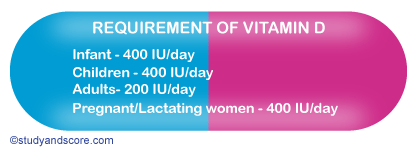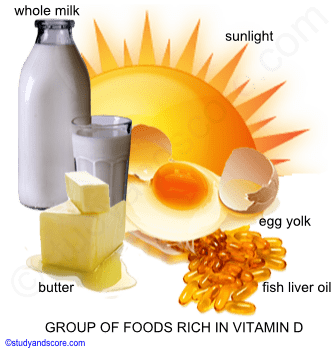After the discovery of Vitamin A, Edward Mellanby, a British doctor realized that dogs feeding on cod liver oil were resistant to rickets disease. With this he could acknowledge that vitamin A or a similar factor was present in cod liver oil which helped in the prevention of rickets in these dogs.
Elmer McCollum further conducted experiments on this factor. He destroyed vitamin A in cod liver oil and altered it. He fed the diseased dogs with altered oil and could still cure the dogs. Consequently he concluded that vitamin A is not the factor in cod liver oil which treated rickets. McCollum called this factor as vitamin D (as it was the fourth vitamin to be titled after vitamin A).
The following are the two distinct forms of Vitamin
It is difficult to make standard recommendations for the dietary requirements of vitamin D since the amount of vitamin D produced in the body by the action of sunlight varies from person to person. Many people may obtain this vitamin from sunlight itself. Babies and growing children require more vitamin D than adults, due to rapid growth and bone development.

Vitamin D is not widely distributed in nature and the best sources are fish liver oil. Milk, butter and egg yolk are the only foods in the ordinary diet that contain vitamin D. Vitamin D can also be obtained by exposure to sunlight.

Fat helps in the absorption of vitamin D and bile is essential for its absorption. Vitamin D enters into the general circulation via lymph and is largely stored in liver and kidneys.
Children receiving an inadequate supply of vitamin D develop rickets due to inadequate deposition of calcium and phosphorus in bones. Premature infants are more susceptible to rickets than full term infants. In adults inadequate supply of vitamin D causes osteomalacia, a condition in which the bones become soft, weak and painful.
The following are the functions of Vitamin D

1. Mention the sources of Vitamin D.
2. How can the deficiency of Vitamin D affect human body? How to treat Vitamin D deficiency?
3. List out the functions of Vitamin D.
- Share with your friends! -
Login to post your comment here...
- or with social Account -